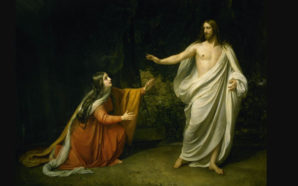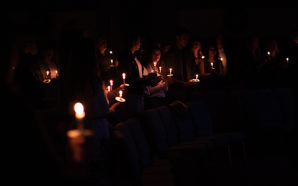For the ancient Greeks nostalgia was the ache that a traveller far away from home had for returning home. It was saddening. But it could inspire them to press on journeying even when to do so seemed hopeless. Today nostalgia is associated more with a sedentary life. It is the sweet and sentimental ache that we might feel for an imagined past. It distracts from the present demands of life’s journey. Despite its association with self-indulgence, however, the place of nostalgia in personal and in political life is worth revisiting.
Most of us have images of past events and places in our lives, most deeply of our childhood, which are invested with magic. Their world is simple, full of unalloyed joy and of promise of something beyond the everyday. Our later memories of them, which may be triggered by similar places, may stir in us pleasure, gratitude and longing for the something beyond our daily lives. As Paradise places they may evoke desire to return to the enchanted world they represent and sadness that it lies in the past. If nurtured they act as a compass bearing that establishes where our lives now stand in relation to what matters most to us. They also give us energy for the future. They are of the past but they make us grateful for the present and shape our hopes and so perhaps our plans for the future.
The images of nostalgia are always gilded. They are selective and unchanging in contrast to the complexity and randomness of a fuller recalling of our childhood. In this we recognise that the perpetually sunny day was frequently rainy and cold, that the trusting child was often beset by anxiety, that the amity of sibling relationships was often quarrelsome, and that the total and lasting happiness of the Paradisal image was in fact transitory. The unalloyed delight represented in the image excludes the pain and transience that were part of the reality.
Our recognition of the selectivity of images that engender nostalgia suggests that within it is a double process. The images reflect a process of enchantment that creates a magic world. Also integral to nostalgia, however, is a process of disenchantment in which we realise how partial and timeless is the child’s view of a world that in reality is more complex and transient. In nostalgia the hope and joy recalled in the paradisal image is matched by a corresponding sadness that this is a paradise lost.
The challenge posed by nostalgia is to hold enchantment and disenchantment together. The latter is a necessary part of adult life, as is the larger vision of something more that is preserved in the child’s vision. It is potentially a destructive process, whether fuelled by self-doubt or the malice of others. Those whose memories we deconstruct are likely to be resentful. We may be attacking something precious to their identity and to their hope for the future. In the Odyssey, Penelope’s suitors who trashed Odysseus’ dreams of homecoming paid a heavy price. If we give our own lives to deconstructing dreams, hopes and idealised memories, they may be admirable for their honesty but ultimately lacking in humanity.
Childhood memories of course, can fuel nightmares as well as happy dreams. In creating the future we can be either crippled or energised, encouraged or discouraged, by the memories of the past.
‘In nostalgia the hope and joy recalled in the paradisal image is matched by a corresponding sadness that this is a paradise lost.’
What is true of nostalgia in personal lives may also have its counterpart in public life. Our imagined view of the past shapes our view of what the future of society should be. Nostalgia may also account partly for the heat in ‘culture wars’ that set those who want to keep sacred an imagined past and those who wish to deconstruct it.
This can be seen in the place that the Biblical creation stories have had in Christian societies. They portray an idyllic world of peace and harmony between God and human beings, of plenty, leisure and companionship. It is a garden scene seen simply through a child’s eyes. In the Christian imagination it provides an image of a caring God and of what the world could be like. It also provides a license to help make it so. Though providing enchantment, however, the story of creation also includes disenchantment through Satan who suggests a meaner and more worldly-wise interpretation of God’s motives. The subsequent stories of the world of the patriarchs display a constant tension and flux between enchantment and disenchantment.
The heat of the debates about the truth of the Biblical creation story is not surprising. These debates have usually been described as a conflict between science and faith. From the perspective of nostalgia, however, they have also been a cultural struggle between those for whom this simple image of the childhood of the world provided enchantment, a safe place in the world and a hope for the future, and those engaged in disenchantment. The former perceived the latter as stripping away the magic of the world, safety from within it, and hope from the future. Those who dismissed the historicity of the stories, of course, may well have had other childhood images that underlay their commitment to scientific rigour. Both sides brought more to the debate than the logic of their arguments.
‘The heat of contemporary cultural debates may also reflect the dialectic within nostalgia. The image of a world of brave British settlers arriving in an empty continent and founding a prosperous, just and harmonious society in Australia is a comforting myth that gives people standing in their world and also shapes a hope for the future. Those who are comfortable with this image are naturally upset when people point out the complexities. The more so when they propose the image of native Australians at home with one another and their environment, only to be invaded, depopulated and subjugated by European invaders who remain strangers in their own land and rightfully demand justice. The conflict is less about facts than about imaginings of the world, one European focused and the other Indigenous, each grounding identity and hope for people.
‘This constant process of enchantment and disenchantment leads to re-enchantment.’
This conflict between images of beginnings is seen even more clearly in the recent debate in the United States about the decisive moment in the formation of the nation. The accepted view is that the key event was the 1776 Declaration of Independence. The challengers nominated 1619, when the first African slaves arrived in colonial Virginia. Historians, the great enchanters and disenchanters, have debated the evidence for the proposal, but the deeper issue lies in the power of the two imaginings of the two accounts to confirm or disturb a sense of identity.
Cultural debates provoked by nostalgia are tedious. They are generally not self-reflective. In our personal lives we generally find a better way to deal with nostalgia. We move beyond the detail of our child’s imagining while treasuring its core, and situate it in a more complex mixture of stories of our past. Nostalgia preserves the power of our memories to give us a place in the world and hope for the future, while allowing us to enlarge our understanding of the world to accommodate others’ stories in a fuller reality.
That may also be the best path to follow when reflecting on cultural nostalgia. In dealing with the different visions of Australian beginnings we might affirm the settlers’ image of a life labouring to developing the land as a source of identity and hope. We might include it, however, as a moment in a larger story of a people who lived respectfully on the land and who draw on this story as a source of identity and hope. Both these stories then can be complemented and brought together by ethical and historical reflection on the fatal intersection between the two stories. This constant process of enchantment and disenchantment leads to re-enchantment.
Andrew Hamilton is consulting editor of Eureka Street, and writer at Jesuit Social Services.
With thanks to Andrew Hamilton and Eureka Street, where this article was originally published.








